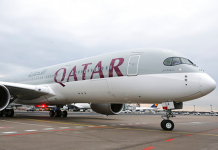
The Pentagon announced Friday that there will be a new focus on Russia and fewer resources needed in Pacific theatre. After seven years in drydock, the Navy will be ramping up the famed 2nd Fleet, which servered as eyes and ears during most of the 20th Century during the cold war with Russia.
“Our National Defense Strategy makes clear that we’re back in an era of great power competition as the security environment continues to grow more challenging and complex,” Chief of Naval Operations Admiral John Richardson said Friday, according to Reuters.
Richardson said the command center for the operation would be based in Norfolk, Virginia. It is important to stress that The 2nd Fleet command currently exists only on paper, but according to USNI News, a publication of the US Naval Institute, the command will open for business on July 1 with 11 officers and four enlisted personnel.
Their ramp-up goal is to eventually grow to 256 personnel — 85 officers, 164 enlisted and seven civilians to be based at their Norfolk command center. At this point, there is no solid timetable for the staffing plans.
The Pentagon also made it clear that The 2nd Fleet will have authority over assigned ships, aircraft and landing forces in the U.S. East Coast and the northern Atlantic Ocean, Richardson added.
The United States military has become wary of Russia and more to the point their aggressive involvement in world hot spots like Ukraine and the increased influence in the government of Bashar Assad in Syria.
Despite President Trump’s efforts to improve relations with Russian President Vladimir Putin, tensions have continued to escalate over Russian meddling in the 2016 U.S. presidential election and the recent poisoning of a former Russian spy in the United Kingdom that has been blamed on Russia.
Defense Secretary Jim Mattis said in January the United States is facing “growing threats” from China and Russia and warned that the U.S. military’s advantages have eroded in recent years.
“We face growing threats from revisionist powers as different as China and Russia, nations that seek to create a world consistent with their authoritarian models,” Mattis said as he unveiled the Pentagon’s national defense strategy.
Our military is still strong, yet our competitive edge has eroded in every domain of warfare,” he added.
Meanwhile, in case you were wondering about the Russian Navy, they have been a bit busy according to this from RT.
Though smaller than in the days of the Soviet Union, the modernized Russian Navy has demonstrated previously unknown capabilities over the past several years. It confirmed some of Foggo’s fears in March, when it was made public that several of its nuclear submarines had approached the east coast of the US and departed undetected, as part of a regular exercise.
Russian navy ships and submarines have also taken part in the fighting against Islamic State (IS, formerly ISIS/ISIL) terrorists in Syria since October 2015, firing cruise missiles and delivering supplies through the Syrian ports of Tartus and Latakia. The most notable naval deployment was in November 2016, featuring the aircraft carrier Admiral Kuznetsov and the heavy missile cruiser Pyotr Veliky (Peter the Great), the largest ship of her class in the world. In June 2017, Moscow announced it would keep a 15-ship task force in the Eastern Mediterranean, operating out of Syria.














